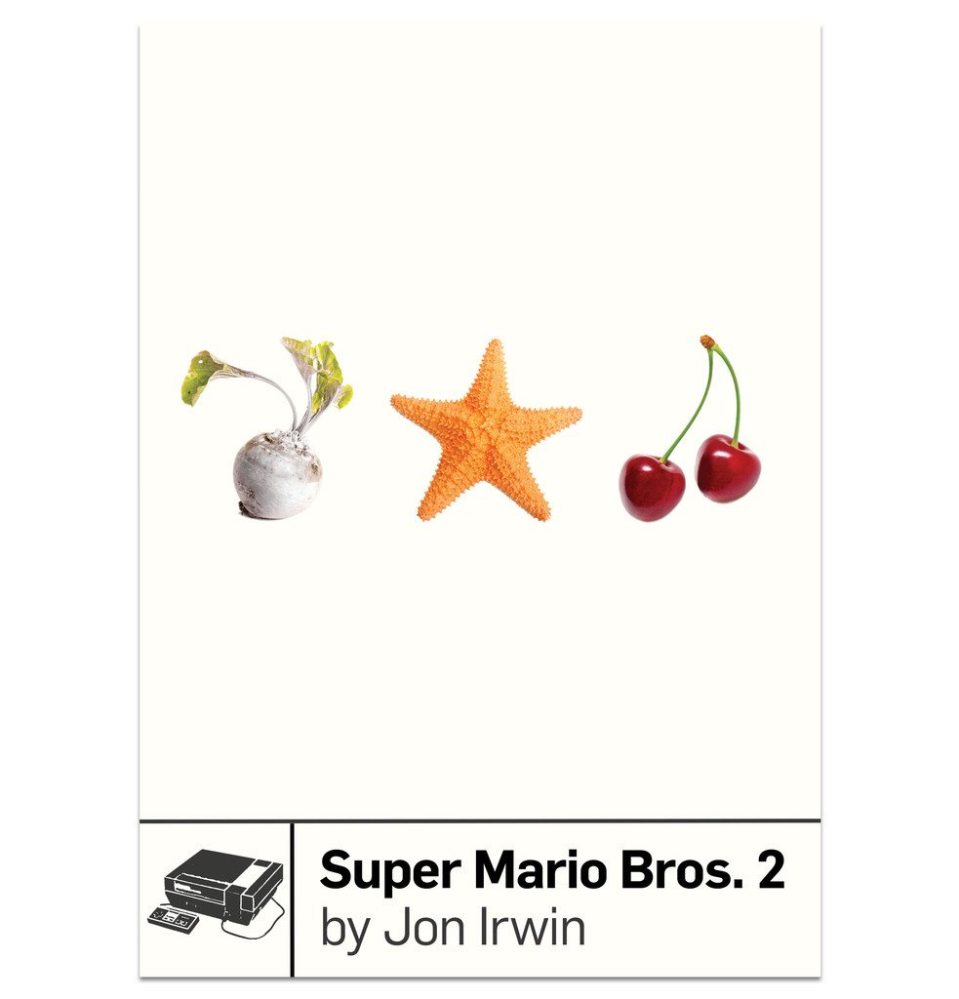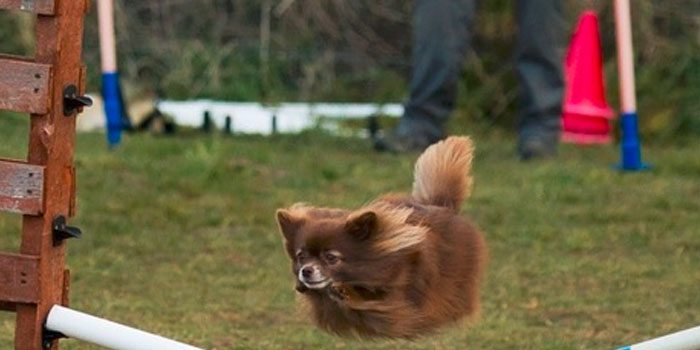 If you’ve read the 33 1/3 book series about record albums, but you love video games, then Boss Fight Books just might be for you.
If you’ve read the 33 1/3 book series about record albums, but you love video games, then Boss Fight Books just might be for you.
The publisher has released several brief “critical, creative, historical, and personal books about classic video games.” Thus far in the series they’ve covered EarthBound, Chrono Trigger, ZZT, Galaga, and Jagged Alliance 2. Boss Fight just completed a successful Kickstarter campaign for six new books, Boss Fight Books Season 2, raising $53,186 — more than 10 times their goal of $5,000. (Writers: See below about pitching a book in this series.)
The sixth title in “Season 1” is about the “black sheep” of the Mario Bros. franchise, Super Mario Bros. 2. I had a chance to ask the book’s author, Jon Irwin, more about his project. Irwin has published essays and criticism in Alimentum, Billboard Magazine, Down East, GamePro, Lumina, and Kill Screen, where he is a contributing writer. In 2009 he received the PEN New England Discovery Award in Nonfiction. He lives near Atlanta but roots for Detroit.
An excerpt from the book follows our Q&A.
Gilsdorf: You consider Super Mario Bros. 2 the “black sheep” of the Mario Bros franchise. Why?
Irwin: In a way, Mario 2 (aka, SMB2) has been retconned out of its black sheep status. By including some of its characters and abilities in future games, Nintendo has gone back and bleached the wool, so to speak. But at the time, SMB2 was a wholly different experience than the ground-breaking original. You plucked turnips from the ground instead of pounding question blocks. You fought off strange plodding enemies with masks on their faces, called Shy Guys, instead of the Koopas and Goombas that would go on to be a series staple. You flew on magic carpets and dug into sandpits. Nothing carried over from the past game, and many of its features were never seen again in a Mario game. The biggest oddity, which is its greatest strength, was the ability to choose one of four characters — Mario, Luigi, the Princess, or Toad — to play through each level. (It took 25 years for Nintendo to give players that same level of choice in a Mario game when they brought back the same four characters in Super Mario 3D World on Wii U.) The game always felt different, odd. And as many came to realize, there was a very good reason for this.
Gilsdorf: You say that SMB2 has a strange history that remains a mystery to most who played it 25 years ago. What’s so odd about the story of the game?
Irwin: Among those who read video game websites and follow the industry, most probably know at least part of SMB2’s history. But to the many people I spoke with who played their NES as a kid and never went back to video games, they had no idea there even was a history. The reason why SMB2 felt so different was because, originally, it was an entirely different game, released only in Japan, called Yume Kojo: Doki Doki Panic. Nintendo did make a straight sequel to Super Mario Bros., but game evaluators in America found it extremely unfair and not very fun. So the head of Nintendo’s American division asked if they could tweak a separate game and release it in the West under the title Super Mario Bros. 2. Doki Doki Panic was originally created as a promotional tie-in to a summer festival being held by Fuji TV; the game’s four characters, members of an Arabian family, were the festival’s mascots. Nintendo replaced them with the familiar Mario characters and voila, a “new” Mario game.
Ethan Gilsdorf: What was the genesis for writing Super Mario Bros. 2 as part of this series?
Jon Irwin: Gabe Durham, editor and co-founder of Boss Fight Books, contacted me last summer about the possibility of writing for his new venture. He already had most of his line-up of authors and books, and there seemed to be a gap: There was no book slated that dealt with a really mainstream franchise, one that almost everyone, game-player or not, would recognize. So he came to me with a list of potential subjects. The Super Mario Bros. games are certainly “classics,” revered for good reason, but most of the love goes to either the original or SMB3. I loved the idea of taking on a giant franchise, arguably the biggest in gaming culture, but looking at one that often gets skipped over. I have little personal connection to the game itself. The choice was more from a storyteller’s perspective. I thought Mario 2 would make for the more interesting material.
Gilsdorf: What’s the most surprising aspect or anecdote about SMB2 you unearthed?
Irwin: I spoke with Gail Tilden, who worked for Nintendo of America in the ’80s and stayed with the company all the way through 2007. She was the first Editor-in-Chief of Nintendo Power, one of the early specialty magazines for games. As such, they could set their own course. And the very first copy of the magazine had SMB2 on the cover. It was fascinating to hear how all these small decisions along the way converged at this one point–with millions of kids being introduced to the next big game, which began its life as another thing entirely. If one step along the way changes, who knows what would have happened?
But what I didn’t know is that, at one point, Tilden pushed for giving away to Nintendo Power subscribers a free NES cartridge of the original SMB2, the Japanese game that never released in the West. She wanted to call the promotion, “The Lost Levels.” But management never greenlit the idea. Years later, the Japanese SMB2 would finally come out in America as Super Mario Bros: The Lost Levels, as part of Super Mario All-Stars, a collection of the NES Mario titles remade for the Super Nintendo. In a pre-Internet age, this was the first time many realized our Mario 2 was not the first attempt. Had Tilden’s promotion gone through, we would have known a whole lot sooner.
Gilsdorf: Can you talk a little about the power of nostalgia in the surging interest in classic video games? This seems related to the series of 33 1/3 books that are essays/tributes/odes to classic record albums.
Irwin: Video games are still such a young medium. To those in their thirties or forties, they were kids when the very first commercial games were being made. And now that we are older, many with families of our own, I think it’s natural to want to shine a light on something from our youth, either to share an early passion with others or, in a way, to make sure that older thing we loved doesn’t get lost or forgotten in our modern world filled with newer, shinier things.
Boss Fight Books was directly inspired by the 33 1/3 series. But a big difference is, music has been around a long time. Like, maybe the longest time? Cave Person #1 was likely humming a tune while slaughtering their lamb dinner. Other media has matured, too, over a longer period of time. Film is over a century old. But it took forty years to make “The Jazz Singer.” Getting from PONG to Super Mario Bros. took a little over ten. In the span of a single generation, video games went from not existing to becoming a cultural force.
People who grew up through that transition have this charged relationship with games. One’s personal nostalgia can also be seen, when viewed as a whole, as a kind of collective memory from the birth of a medium. That’s powerful stuff. No wonder so many people are still thinking about those games they played as a kid, or still playing them today.

Gilsdorf: Anything else you’d like to add?
Irwin: I’m thrilled that Howard Phillips wrote an original foreword for the book. He was one of Nintendo of America’s first employees and the inspiration behind those Howard & Nestor comics from Nintendo Power. To a certain child of the ’80s, he’s a legend. Twelve-year-old me would have exploded if he’d known, two decades later, Phillips would read and praise my (his? old-me’s?) book.
And if any of you out there read it, let me know what you think! My intent was to write a book anyone could enjoy. Super Mario Bros. 2 isn’t just for fans of the game. I try to tell a compelling story that might start with a video game, but really is about people, and culture, and memory. And puppets. And maybe erectile dysfunction (not mine). I’ve said too much.
Lastly! If Mario’s not your jam, there are five other Boss Fight Books so far and another six coming in 2015. And if you aim to write the next great book about a classic game, they’d love to hear your pitch.
For more information, visit Boss Fight Books.
Super Mario Bros. 2: An Excerpt
(From Part I, Chapter 1)
He is immortal. A shape-shifter, a workaholic. Possible misanthrope. His interests are many: virology, golfing, the Olympiad. He exists on shirts, wall decals, baseball caps, backpacks, notepad doodles. Millions of strangers can hum the melody to the soundtrack of his life. Millions more control his chubby body in one of hundreds of video games bearing his likeness and name: Mario.
To Nintendo, Japanese maker of games and toys for more than one hundred years, Mario is their philosophy made whole. It doesn’t matter what you look like, or how powerful or fast or sexy you are. The packaging is an afterthought. All that counts is your smiling face, and your fingers, bent and aching, trying to perfect that cavern-crossing jump.
That Mario is the protagonist of anything is, frankly, bizarre—the kind of happy accident resulting from a mistakenly checked box or an outbreak in the Game Character wing. Our hero is a fat plumber with a limited wardrobe of overalls and an initialed cap, like a baby wearing a nametag. He speaks in high-pitched bursts of nonsense. His most violent acts expose a not-undue detestation of mushrooms and lizards. Motor skills advanced at a rapid pace, while language has remained somewhat under-developed. But his worth goes far beyond pronouncement of a Wa-hoo! or two.
Born into a medium so often depicting the gratuitous sniping of heads, this guileless, lumpy, somewhat pathetic caricature of a caricature has somehow remained not only relevant but the de facto mascot of an entire industry. When we see his face, we think of video games. (To those born after 2000, perhaps that mantle will belong to an Angry avian, or the reflective shield of Halo’s Master Chief; I shall weep for you privately.)
And yet in the history of his dominance there remains a strange blip. A game where, instead of kicking turtles and jumping at question blocks, he dug up turnips and raced floating masks. A game where Mario let others steal his limelight. A game allowing seven-year-olds their first pull of a slot machine. And whose magazine cover clay image launched millions into literate pubescence.
A game called Super Mario Bros. 2.





